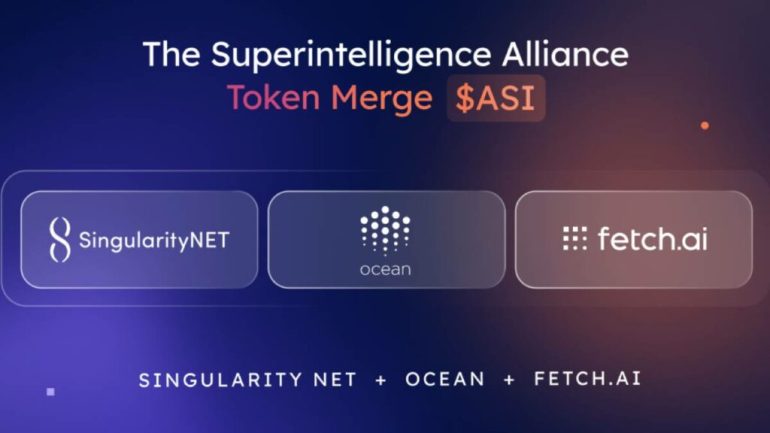- Fetch.ai, Ocean Protocol, and SingularityNET merge to form the Artificial Superintelligence Alliance (ASI) by June 13, 2024.
- $FET token will transition to $ASI, facilitating seamless operation across the decentralized AI network.
- The merger signifies a monumental step towards a decentralized AI infrastructure, combining research, brands, and technologies.
- ASI Alliance aims to challenge Big Tech’s dominance in AI development and accelerate commercialization of AI technologies.
- Market disruption expected as ASI Alliance becomes the largest independent AI foundation, pioneering decentralized superintelligence.
Main AI News:
In a landmark announcement, Fetch.ai, Ocean Protocol, and SingularityNET have finalized the creation of the Artificial Superintelligence Alliance (ASI), slated to be completed on June 13, 2024. This unprecedented merger heralds a new epoch for artificial intelligence, marking a significant departure from the conventional Big Tech-dominated landscape.
Introduction of the $ASI Token
Commencing June 11, 2024, the $FET token will undergo a transformation into $ASI, culminating in the merger’s completion on June 13. This unified token will seamlessly operate across the amalgamated decentralized AI network, consolidating the three projects into a cohesive ecosystem. The migration process, facilitated through an audited and secure token migration contract, ensures a smooth transition for over 200,000 token holders.
A Glimpse into the Future
The consolidation of Fetch.ai, SingularityNET, and Ocean Protocol epitomizes the realization of a decentralized AI infrastructure on an unprecedented scale. By amalgamating their research, brands, technologies, and products, these entities are laying the groundwork for an open, scalable AI ecosystem.
Humayun Sheikh, CEO and Founder of Fetch.ai and ASI Chairman, underscores the significance of this alliance in redirecting the trajectory of AI innovation away from Big Tech’s stronghold. He remarks, “This Alliance forges a different path in a world of exploding AI innovation. With our newfound economies of scale, we can make significant inroads in changing the narrative and direction controlled by Big Tech.”
Disrupting Big Tech’s Hegemony
Driven by the exponential growth of AI and the stellar performance of leading AI projects, this strategic partnership poses a formidable challenge to Big Tech’s dominance in AI development. The ASI Alliance, led by visionaries Humayun Sheikh, Ben Goertzel, and Trent McConaghy, aims to accelerate the commercialization and monetization of AI technologies, fostering widespread accessibility to cutting-edge AI platforms and extensive datasets.
Bruce Pon, Ocean Protocol Founder and ASI Council Board Director, envisions the ASI Alliance as a game-changer for web3 adoption in AI and data realms. He states, “The ASI Alliance is going to be a game-changer for web3 adoption for AI and data. We’ve worked through a lot of details to make the process go smoothly, and we look forward to formally launching ASI.”
Pioneering Decentralized Superintelligence
The Artificial Superintelligence Alliance emerges as the world’s largest independent AI foundation, championing the cause of decentralized superintelligence. Dr. Ben Goertzel, CEO of the ASI Alliance, asserts, “This merger paves the way for a new era in AI, combining our strengths to achieve unprecedented advancements. This is only the start of a broader movement to gather together forces working toward beneficial decentralized AGI and super-intelligence.”
Conclusion:
The formation of the Artificial Superintelligence Alliance marks a significant shift in the AI market landscape. By uniting leading projects and technologies under one umbrella, the ASI Alliance poses a formidable challenge to Big Tech’s dominance. This consolidation not only accelerates AI development and accessibility but also signifies a growing momentum towards decentralized AI infrastructure. As the ASI Alliance emerges as a powerhouse in the industry, stakeholders should anticipate heightened competition and innovation, along with increased opportunities for collaboration and market disruption.

